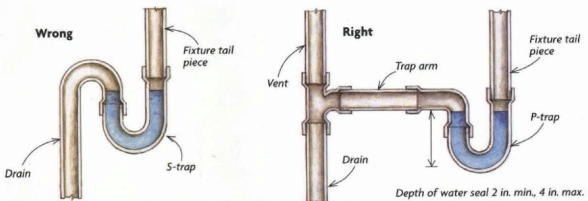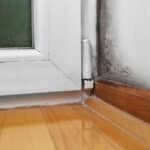When it comes to plumbing systems, there’s more than meets the eye beneath the surface. Two commonly used components, the S-trap and the P-trap, play a crucial role in preventing unpleasant odors and hazardous gases from infiltrating your home. However, changes in plumbing standards have rendered S-traps obsolete due to their potential to compromise the water seal and invite unwanted sewer gases indoors. In this article, we will shed light on the key differences between S-traps and P-traps, emphasizing the importance of adhering to modern plumbing regulations for a safe and sanitary living environment.
S-Traps vs. P-Traps: A Closer Look
S-Traps: A Design Flaw of the Past
In the not-so-distant past, S-traps were a common plumbing feature found in many homes. Their distinctive shape resembled the letter “S,” hence the name. While S-traps effectively created a water seal to prevent sewer gases from entering living spaces, they had a significant flaw. The design had the potential to siphon the water seal out of the trap, opening the door for foul odors and harmful gases to permeate the home. This design flaw posed health risks and discomfort to homeowners, warranting the need for a more reliable alternative.

P-Traps: Modern Plumbing’s Savior
Enter the P-trap, a revolutionary plumbing design that addresses the shortcomings of the S-trap. The P-trap derives its name from its shape, which resembles the letter “P” when viewed horizontally. This clever design ensures a more reliable water seal that resists siphoning, effectively blocking sewer gases from infiltrating your living spaces. By utilizing the physics of water’s self-sealing properties, P-traps provide a dependable barrier against unpleasant odors and potential health hazards. Its effectiveness has led to its widespread adoption in modern plumbing systems.
Plumbing Standards and S-Trap Prohibition
As plumbing knowledge advanced and safety concerns mounted, plumbing codes and standards evolved to protect homeowners from the risks associated with S-traps. Recognizing the potential dangers of siphoning and sewer gas infiltration, current plumbing regulations prohibit the use of S-traps in both residential and commercial buildings. This restriction ensures that homes adhere to a higher standard of sanitation and safety, ultimately contributing to a healthier living environment for all.
The Dangers of Sewer Gases
Sewer gases are more than just unpleasant odors; they can pose serious health risks to occupants. These gases, which can include methane and hydrogen sulfide, have the potential to cause respiratory issues, nausea, and even more severe health complications with prolonged exposure. The presence of sewer gases is not only uncomfortable but can also compromise the well-being of your household. Choosing a P-trap over an outdated S-trap is an investment in safeguarding your family’s health and maintaining the value of your home.
Conclusion
In the world of plumbing, even the smallest components can have a significant impact on your home’s safety and comfort. The transition from S-traps to P-traps marks a significant step forward in plumbing technology, offering a reliable defense against the infiltration of sewer gases. While S-traps are relegated to history due to their design flaws, P-traps have become the gold standard for modern plumbing systems, ensuring airtight water seals and minimizing health risks for homeowners. At Tennessee Inspection Services, we prioritize your well-being and the safety of your home. If you have concerns about your plumbing system or are unsure about the traps in your residence, don’t hesitate to reach out to us for a thorough inspection. Your family’s health and comfort are our top priorities, and we’re here to help you maintain a safe and welcoming living environment.






